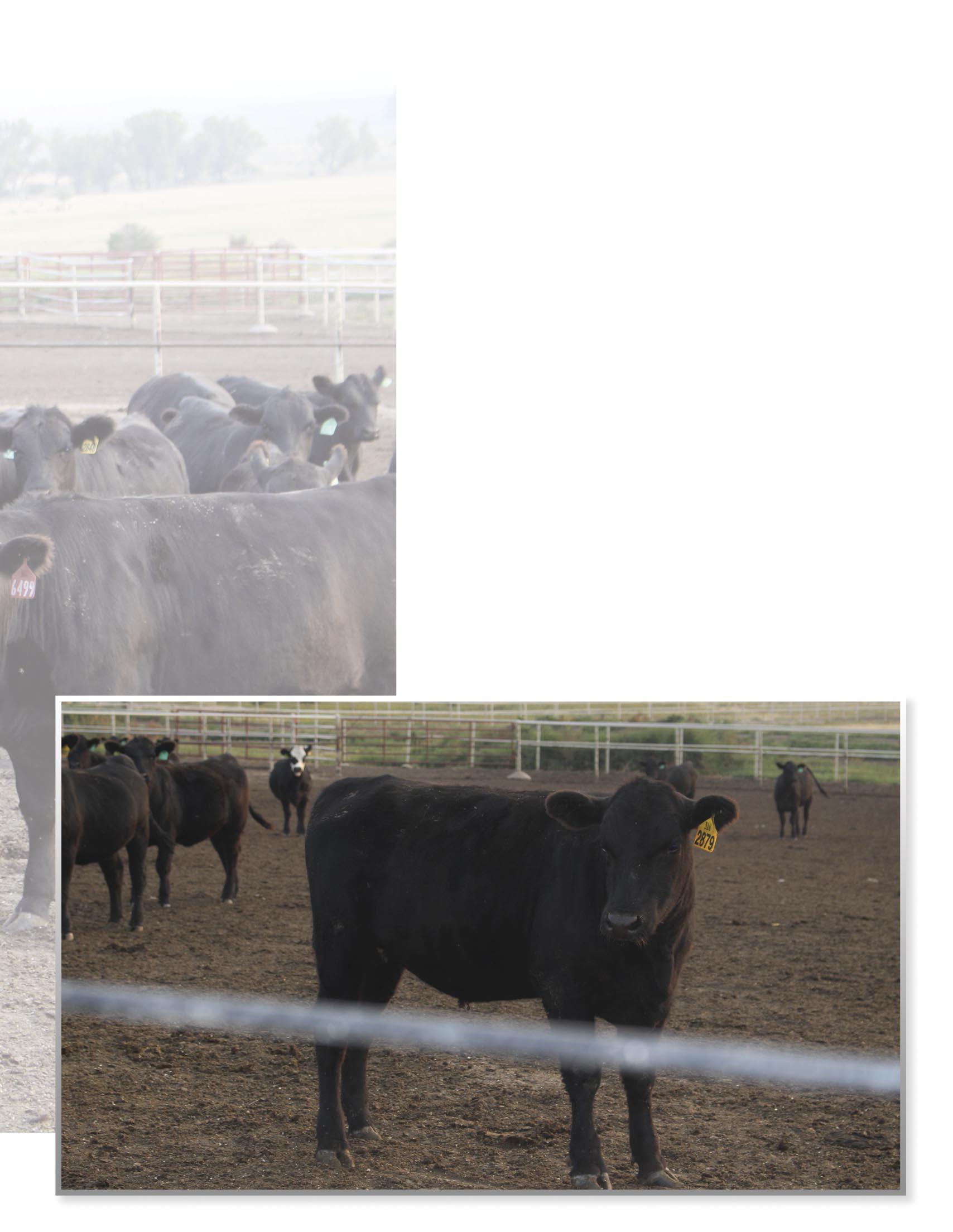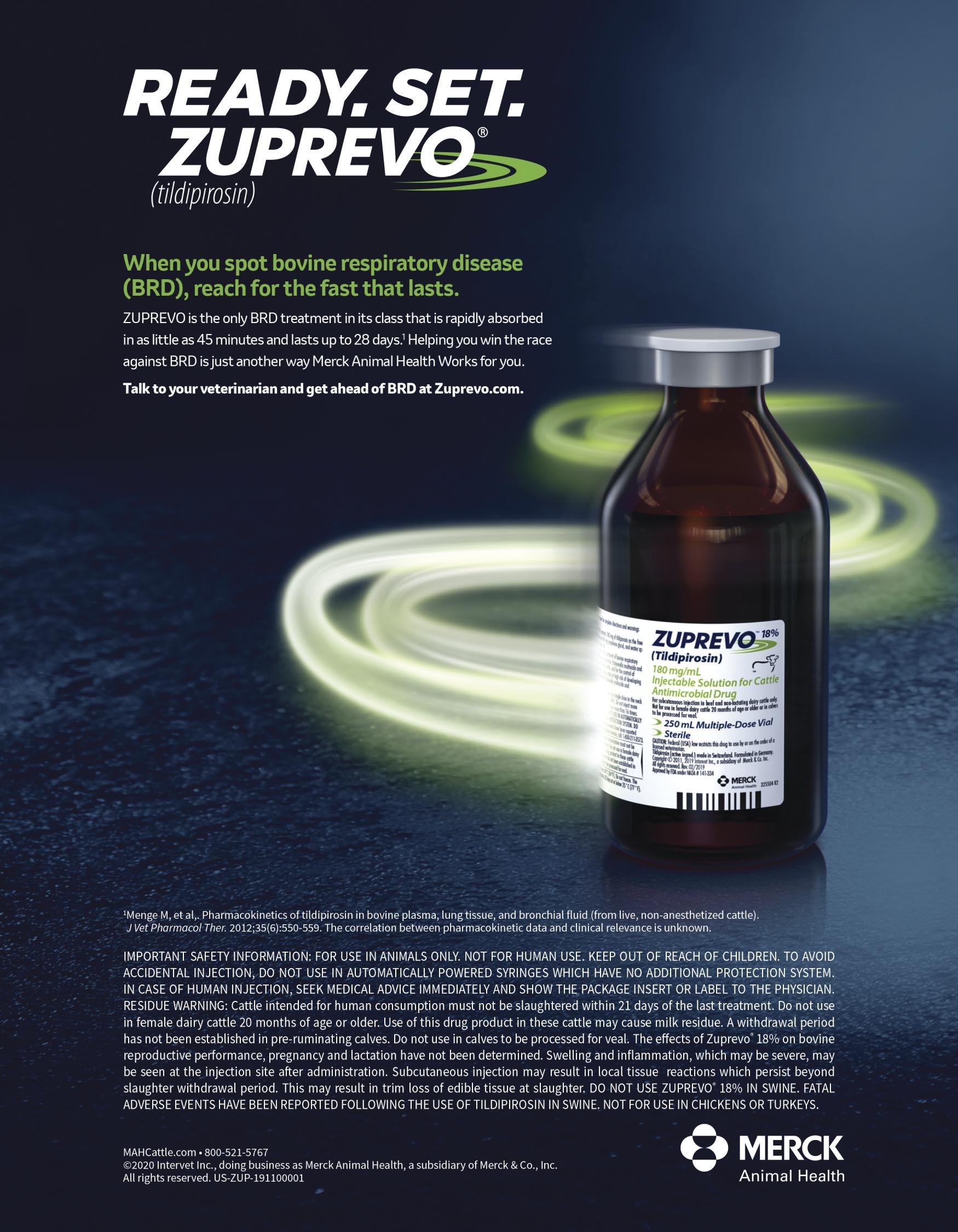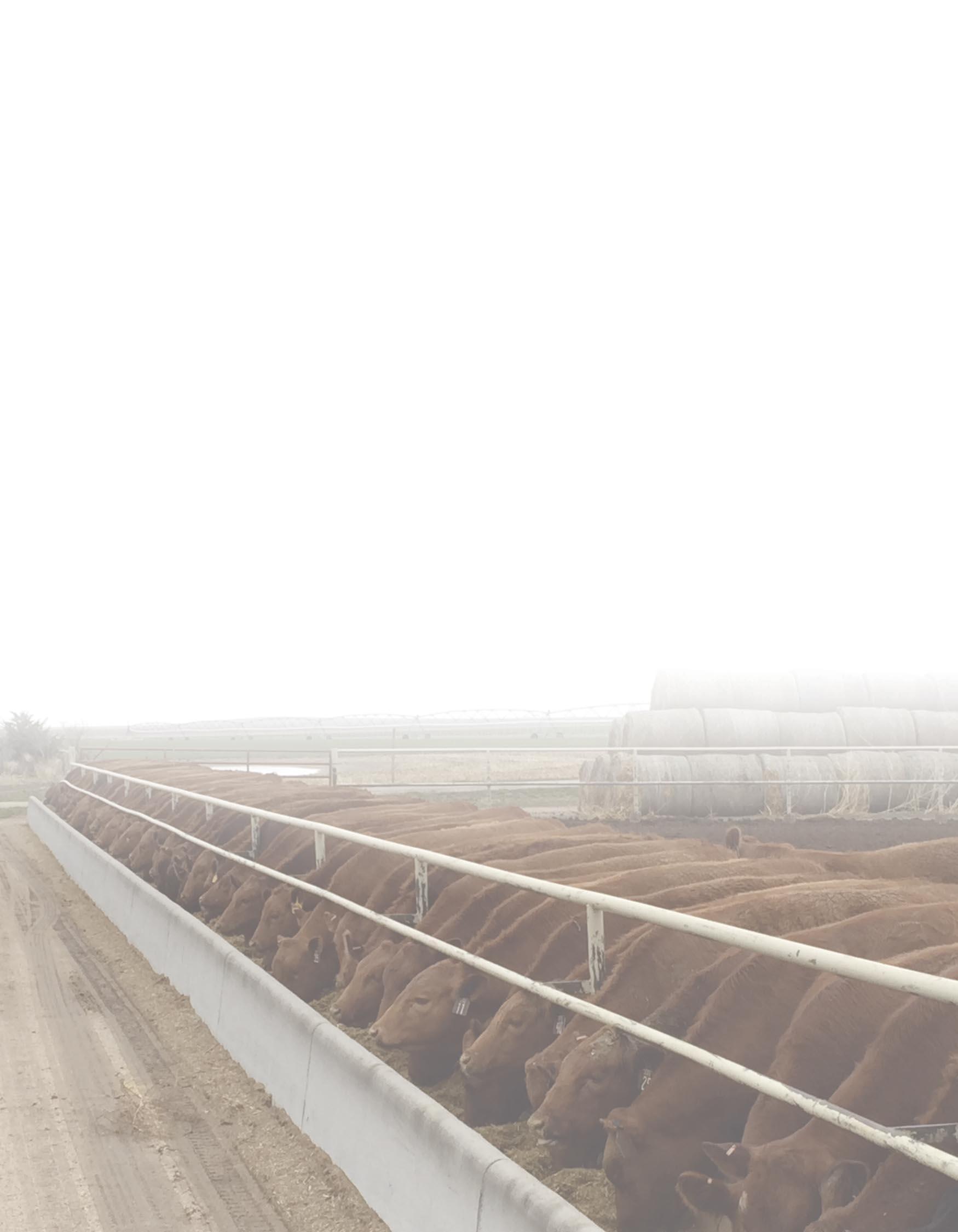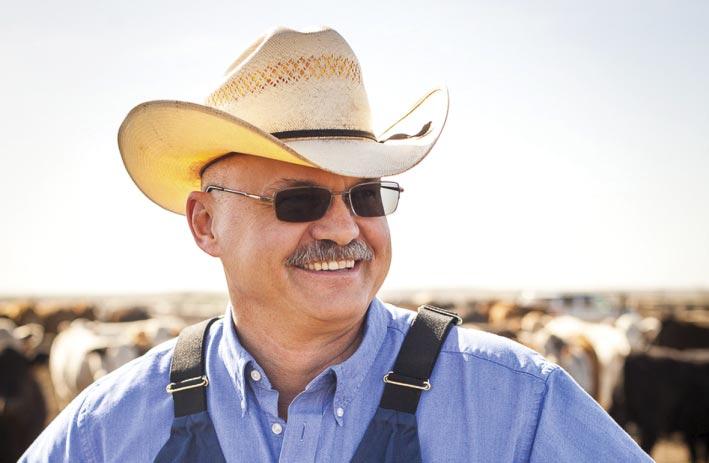
4 minute read
The Impact of Animal Welfare on BRD
By David Sjeklocha, D.V.M., Technical Services Manager, Merck Animal Health
Alifetime of experience, from pen rider through consult ing veterinarian, has made it clear to me the more we pay attention to animal welfare, the more we find how much of a profound effect it has on cattle health.
Every extra day cattle are kept on feed is another day they can get sick. With the impact of COVID-19 on packing facilities, many are feeding cattle to heavier weights and that can require ration changes and perhaps another trip through the chute for reimplanting. This can add stress, which dampens the immune system and makes the animal more vulnerable to disease challenges.
Bovine respiratory disease (BRD) is one of the most common disease hurdles and its impact on days on feed and cost of gain, plus treatment costs can take their toll on productivity and profits. Good animal husbandry practices with a focus on minimizing or de-stressing cattle, coupled with a comprehensive vaccine program, is the first line of BRD defense.
Vaccinating vs. immunizing cattle
It’s critical to understand that “vaccinating cattle” is not the same thing as “immunizing cattle.” Vaccinating is the act of administering a vaccine; immunizing cattle is the animal actually responding to the vaccination. For this to happen, two things need to take place. First, the vaccine has to be correctly cared for and administered. Second, the animal has to be in a physiological state in which it can respond to the vaccination.
When reconstituting the modified live vaccine, use a swirling or rolling motion vs. shaking, which can damage the modified live virus within the vaccine. Vaccines should be kept cool and out of sunlight. Modified live vaccines should be used within two hours of opening.
If you have 200 calves to vaccinate, you do not want to mix all 200 doses, and then get cattle in and start vaccinating. It’s important to mix as you go. Any remaining reconstituted modified live vaccine at the end of the day should be discarded.
It’s important to store the vaccine cake and sterile diluent per the label. Over the years, I’ve seen examples of improper vaccine storage and handling, including a feedyard that only kept the cake – and not the sterile diluents – in the refrigerator. Mixing the cake with warm sterile diluents greatly shortens, if not eliminates, the effectiveness of the vaccine when mixed.
The protocols for proper handling of vaccines or medications prior to administration need to be fully explained and reinforced with processing crews, whether an on-site or custom crew.
Preparing cattle for immunization
All vaccine labels read along the lines of “for aid in preventing disease in healthy cattle”. To be effective, the animal has to be healthy and in a physiological state to respond to the vaccination.
The time leading up to calves arriving at a feedyard can be challenging. If calves are coming from an auction, there’s comingling and a fair amount of sorting. Even if the handlers are well-trained, the animals are going to be stressed due to the additional handling and movement, and shipment to a new location.
Unless the calves are coming directly from the ranch of origin, they’ve had two or three experiences of being on the truck, probably within a 48- to 96-hour period. Unloading – often done during the night – can increase calf stress. A tired trucker paired with a yard employee who has awoken in the middle of the night can lead to shortcuts in good animal handling practices.
There are things we can do prior to arrival that will help calves overcome the stress of hauling and a new environment. The receiving pen should be ready with all of the basics in place – bedding, clean water, hay in the bunks and perhaps some ration waiting for their arrival.
Unloading needs to be as stress-free as possible. Using calm, quiet handling methods, and putting calves into a properly prepared pen allows them to settle in and rest. A herd veterinarian can best advise what vaccines to use and when to vaccinate calves. For calves to be able to respond to vaccines, they should be on feed and drinking.
When you do administer vaccines, stress can be reduced by minimizing the time calves are away from the home pen. In a tub and alleyway system, there’s a tendency to think of the tub as a holding pen, and it shouldn’t be. As soon as cattle enter the tub, they’re at a heightened level of stress and that continues through the alleyway and chute. I recommend bringing in just enough cattle at a time to keep the crew at the chute working and not have cattle standing in the tub.
I’m a firm believer that cattle can remember their experience. So, if they have a good experience their first time through the chute, they will be more inclined to handle the process with ease the next time.
Making the right treatment choice
Every day we own cattle is another day we need to keep them healthy. While adhering to vaccination protocols can certainly help to keep cattle healthy, we recognize that some animals still will get sick and respiratory disease often is involved. It’s for those situations where an effective treatment program is needed. Additionally, COVID-19 has highlighted some of the challenges with cattle on feed longer, but it certainly wasn’t the first time we’ve been aware of the increased respiratory issues we can see late in the feeding period.


Cattle recover faster when we use the right antibiotic, so it’s important to follow the protocols set forth by the veterinarian. New diagnostic tools, such as Whisper ® Veterinary Stethoscope, can help us make better antibiotic decisions.

Using the right antibiotic ultimately reduces treatment times and the amount of antibiotic used, which is a priority for consumers. We also need to focus on the condition of the hospital pen and be sure it’s not overcrowded. To aid in their recovery, cattle need the fundamentals of good animal husbandry – fresh feed, clean water, dry pens and plenty of bedding.
Hand-in-hand with not overcrowding the hospital pen is getting the calves back to the home pen in a timely manner. Some animals, if detected early in the disease process, may be able to be returned to the home pen the same day they are treated. This can require extra labor, but it reduces hospital pen overcrowding and results in healthier animals.
Education and attitude
Continuing education for the entire crew is a priority. One thing I found in both consulting and daily feed yard management is the more we train on and apply good animal husbandry principles, the more we explain the “why” of what we do, the more the employees will appreciate and implement proven practices.











